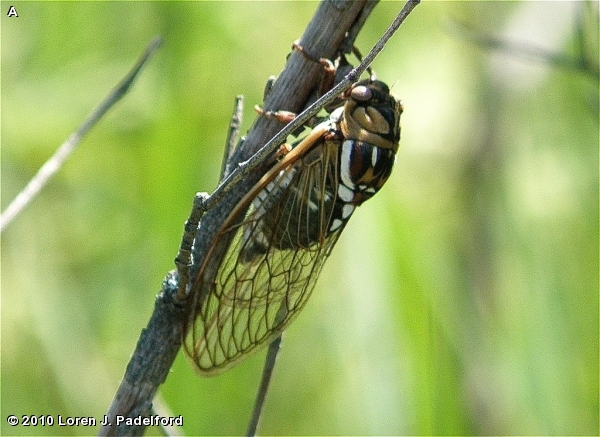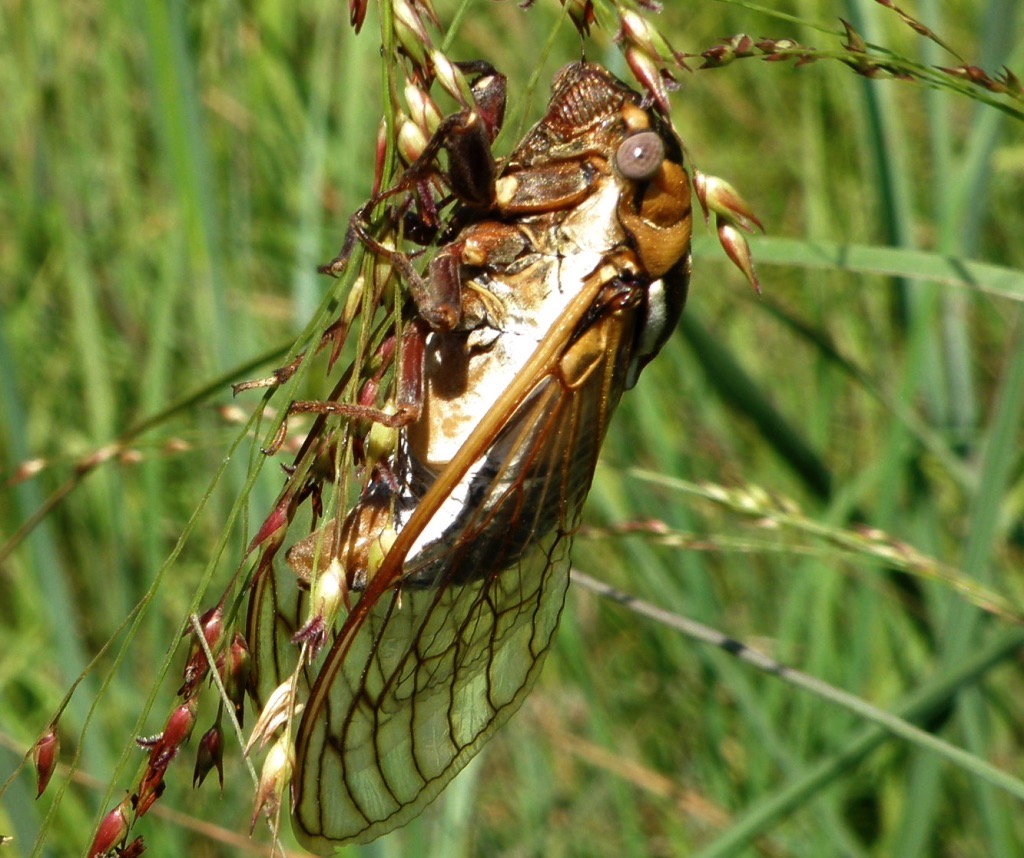
A large bodied cicada about 1.5 inches long (37 mm) with a dark brown abdomen, a brown and ten thorax and clear wings. Head is narrower than thorax. It has prominent white spots on the abdomen. It is considered by many to be the most beautiful of all cicadas.
This cicada is a creature of the tall grass prairie. Before European settlement and the conversion of the prairies into cropland, this cicada was the most common in the midwestern plains states. It has declined greatly in numbers but is still present in the appropriate habitat. The individual shown here was photographed in the prairie at Neale Woods. It may not be present in Fontenelle Forest because of lack of habitat.
Neotibicen dorsatus is known as an annual cicada, that is, there is an emergence every year. However, individual cicadas stay in the ground feeding on tree roots for 3 to 5 years before they emerge to become adults. There are a number of natural predators of this cicada including cicada killer wasps and a flesh fly (Emblemasoma erro). The flesh fly is able to hear the male cicada as it sings to attract a female. When it finds its “prey,” the fly deposits live larvae on the cicada. The larvae begin to immediately burrow into the abdomen of its host and proceed to eat from the inside out.
Disclaimer: The content of NatureSearch is provided by dedicated volunteer Naturalists of Fontenelle Forest who strive to provide the most accurate information available. Contributors of the images retain their copyrights. The point of contact for this page is: Loren Padelford.


